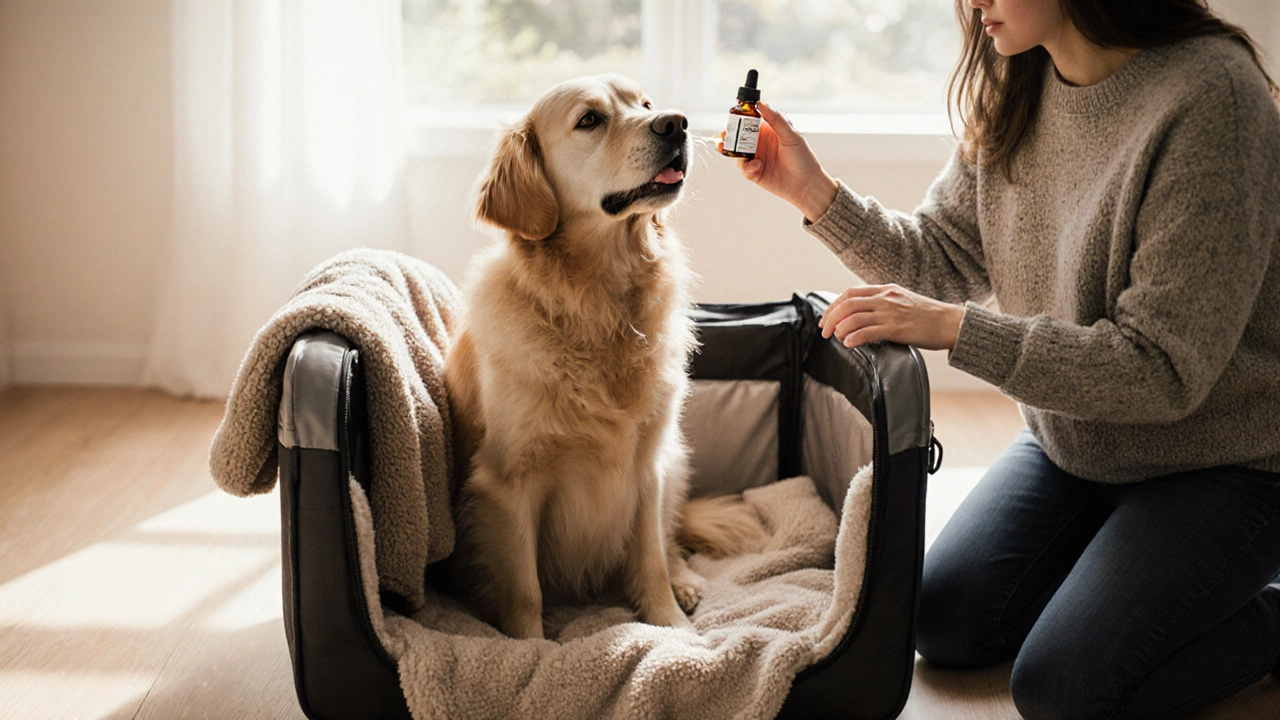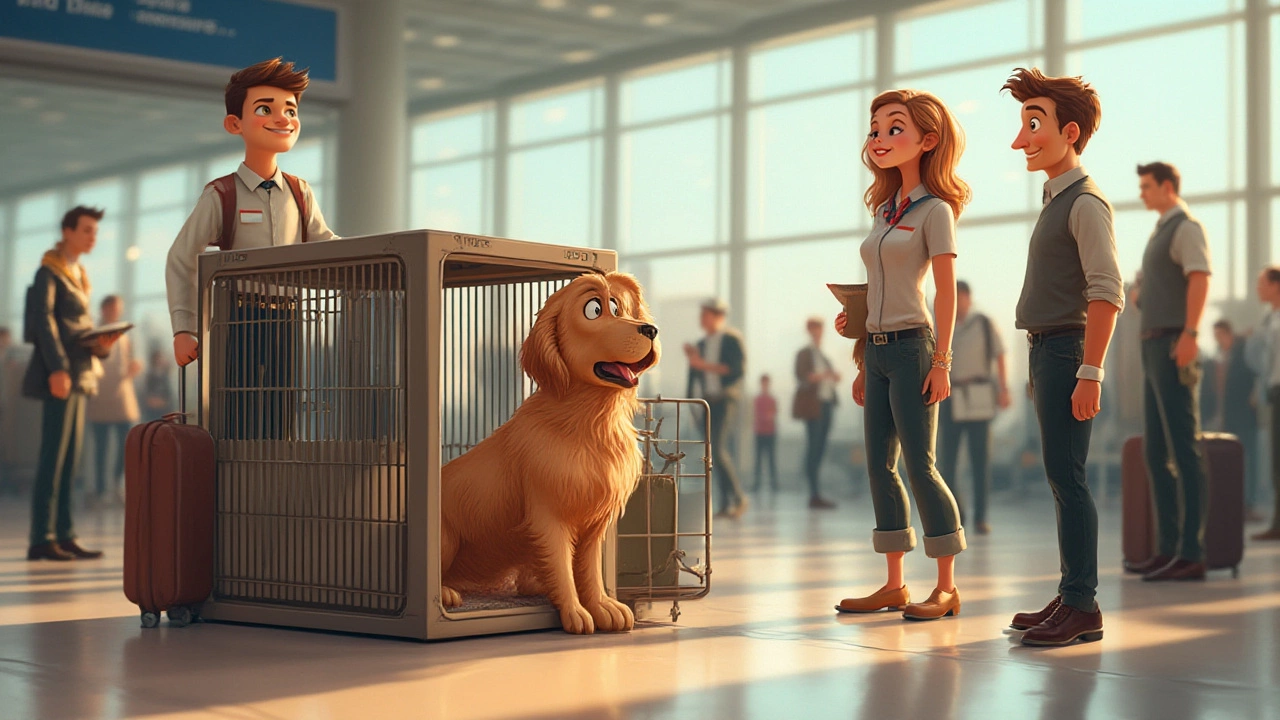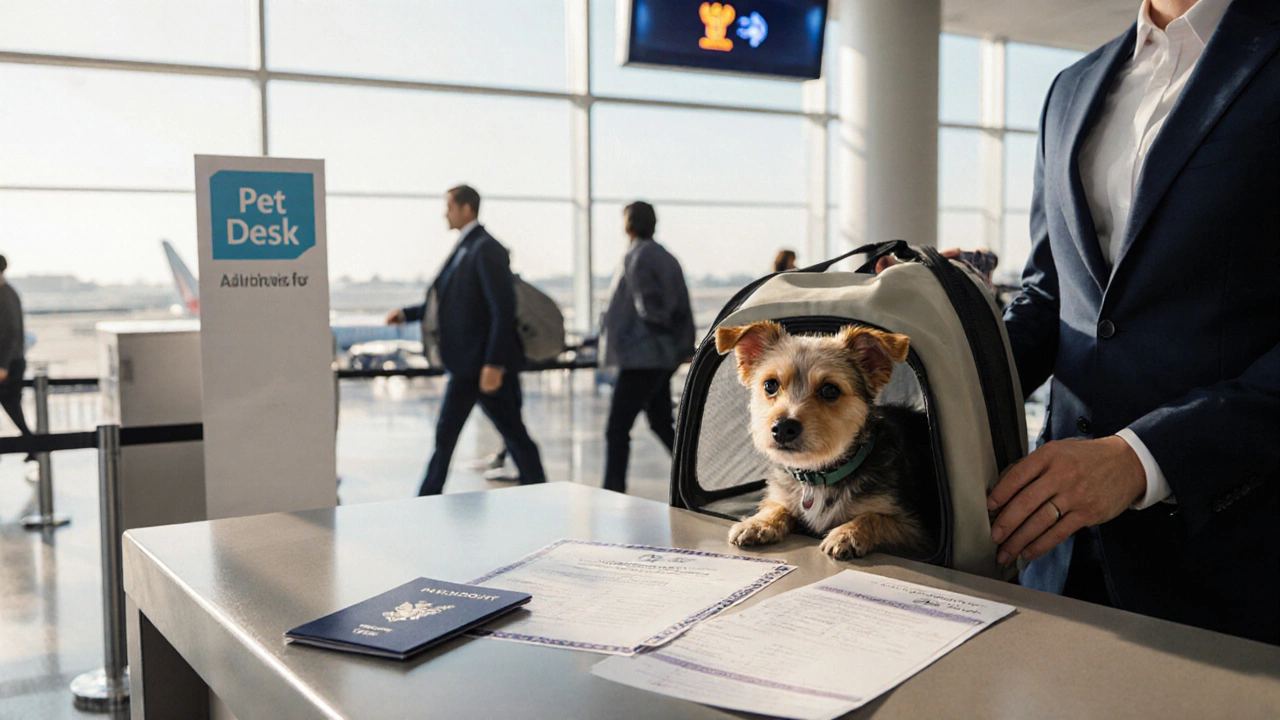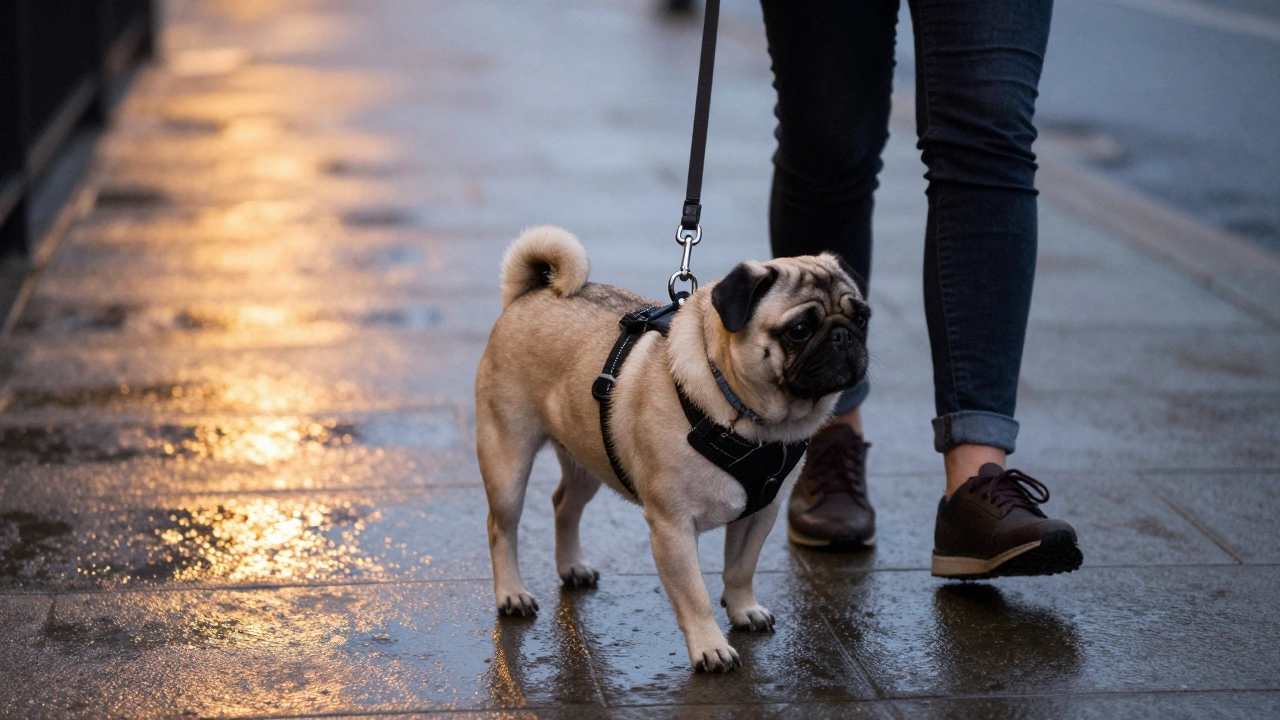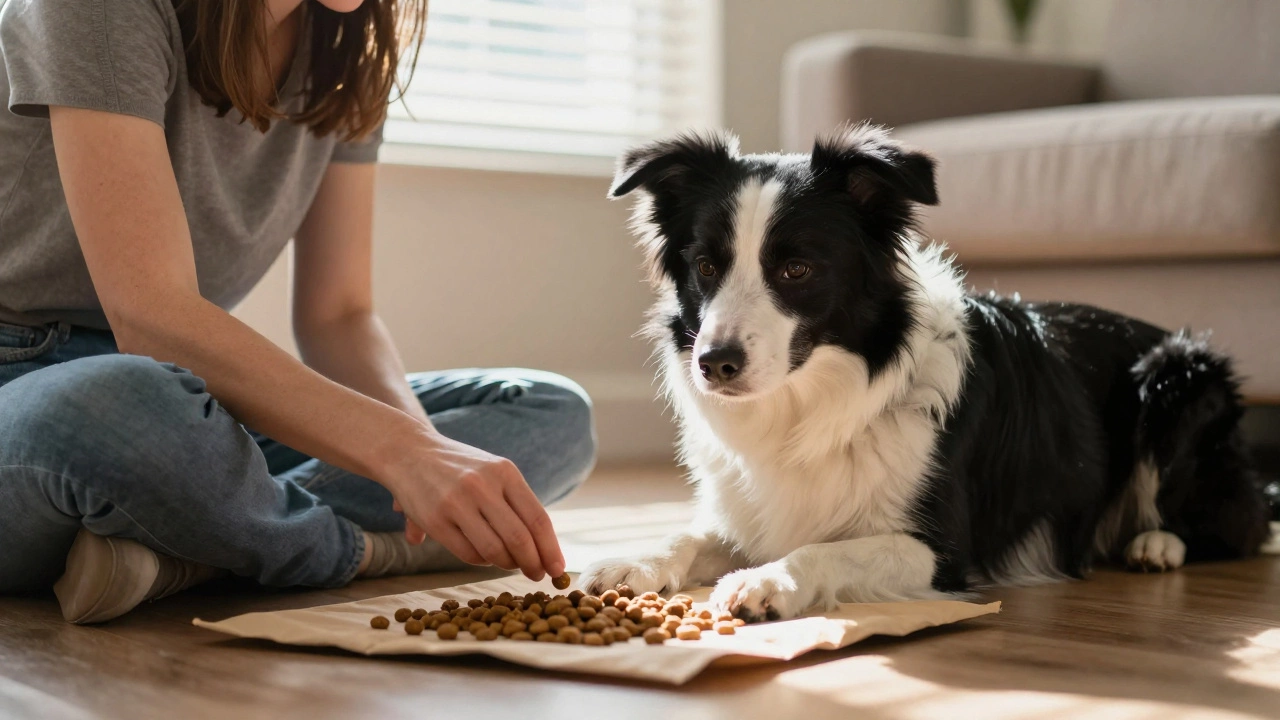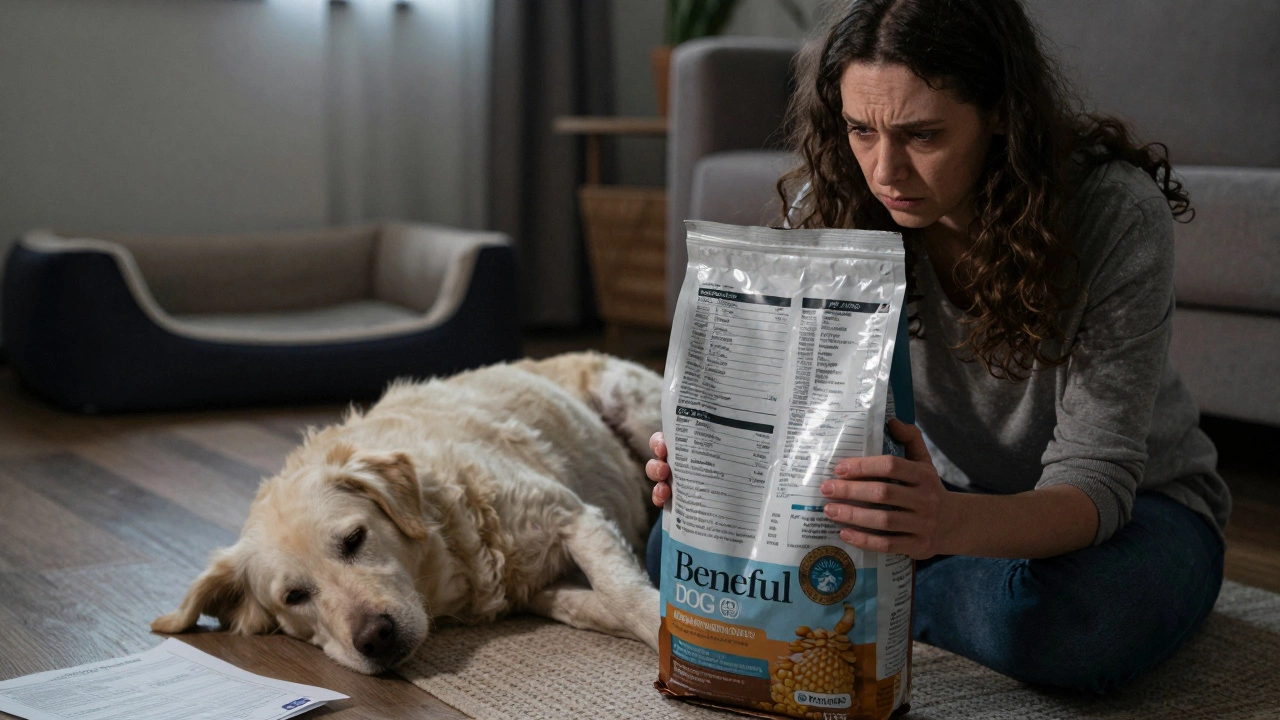Dog Calming Aid Selector
Recommended Calming Aid
Comparison Table
| Product | Active Ingredient | Onset Time | Duration | Vet Recommendation |
|---|---|---|---|---|
| Benadryl | Diphenhydramine | 30–60 min | 4–6 hr | Good for short trips; watch for drowsiness. |
| Zylkene | α-S1-casein | 30–45 min | 6–8 hr | Non-sedating, safe for most dogs. |
| Adaptil | Dog-appeasing pheromone | 15–30 min | 4–6 hr (spray) / 24 hr (collar) | Excellent for anxiety without ingestion. |
| CBD oil | Cannabidiol | 30–90 min | 4–6 hr | Effective but must be high-quality, low-THC. |
| Melatonin | Melatonin hormone | 30–60 min | 4–8 hr | Good for dogs with sleep-related anxiety. |
Flying can turn a calm pup into a nervous wreck, and as a pet parent you’ll wonder what you can give your dog to keep him calm while flying. The good news is there are several safe, vet‑approved options that can smooth the journey without turning the cabin into a pharmacy. Below you’ll find the low‑down on why dogs get anxious at altitude, which calming aids actually work, and how to use them without risking side effects.
Key Takeaways
- Most dogs benefit from a combination of pre‑flight preparation and a mild, vet‑recommended dog calming aid.
- Prescription‑free options like Zylkene, Adaptil, and low‑dose melatonin are generally safe for short trips.
- Always check airline pet policies and run a quick health check with your veterinarian before the flight.
- Give the chosen aid at least 30‑60 minutes before boarding for peak effect.
- Pair the aid with a familiar blanket, a snug travel carrier, and a calm demeanor from you.
Why Dogs Get Anxious on Planes
When you hear the roar of engines, feel the vibrations, and sense a shift in pressure, a dog’s inner world reacts instantly. Dog is a highly social animal that relies on familiar scents and routines to feel secure. In a cramped carrier, unfamiliar smells, sudden movements, and the loss of visual cues create a perfect storm of stress. Even a normally confident dog can experience a surge of cortisol, the stress hormone, which manifests as panting, whining, or trying to escape the carrier.

Vet‑Approved Calming Options
Below are the most commonly recommended aids. Each entry includes the active ingredient, typical dosage for a medium‑size dog (22‑30lb), onset time, and any special notes.
Benadryl (diphenhydramine) is an over‑the‑counter antihistamine that also has mild sedative properties
- Typical dose: 1mg per pound of body weight, given 30minutes before travel.
- Onset: 30‑60minutes.
- Duration: 4‑6hours.
- Notes: Safe for most dogs, but avoid if the pet has glaucoma, heart disease, or is on MAO‑inhibitor meds.
Zylkene is a natural supplement derived from the milk protein α‑S1‑casein
- Typical dose: 0.25ml per 10lb of body weight.
- Onset: 30‑45minutes.
- Duration: 6‑8hours.
- Notes: Non‑sedating; works by supporting the brain’s GABA pathways. Ideal for dogs that only need a calming “nudge” without drowsiness.
Adaptil is a synthetic version of the canine facial pheromone that signals safety
- Form: Collar, spray, or diffuser.
- Onset: 15‑30minutes for spray; up to 2hours for collar.
- Duration: Up to 24hours (collar) or 4‑6hours (spray).
- Notes: No ingestion needed; useful for dogs that are nuisance‑free but become nervous in confined spaces.
CBD oil is a hemp‑derived extract rich in cannabidiol that can reduce anxiety without psychoactive effects
- Typical dose: 0.2ml per 10lb, administered 45minutes before the flight.
- Onset: 30‑90minutes.
- Duration: 4‑6hours.
- Notes: Choose a product with < 0.3% THC and a certificate of analysis. Discuss with your vet if your dog is on seizure medication.
Melatonin is a hormone that regulates sleep‑wake cycles and can calm anxious pets
- Typical dose: 0.5mg per 10lb, given 30minutes before boarding.
- Onset: 30‑60minutes.
- Duration: 4‑8hours.
- Notes: Best for dogs that have trouble settling down; avoid if the dog is pregnant or has thyroid issues.
How to Choose the Right Calming Aid for Your Dog
Think of the decision as a simple checklist. Veterinarian is the most reliable source for confirming dosage and suitability for your dog’s health profile. Use the following criteria:
- Health conditions: Dogs with liver disease, heart problems, or seizure history need extra caution.
- Desired effect: If you only need a gentle calming boost, Zylkene or Adaptil are ideal. For stronger sedation, Benadryl or melatonin may be better.
- Travel length: Short hops (under 4hours) work well with a single dose of Benadryl or melatonin. Long-haul flights may require a combination of a pheromone collar and a supplement.
- Legal restrictions: Some airlines ban CBD oil or limit the amount of medication you can bring. Always review the airline pet policy document that outlines medication rules and carrier requirements before you pack.
Comparison of Common Calming Aids
| Product | Active Ingredient | Typical Dose | Onset | Duration | Vet Recommendation |
|---|---|---|---|---|---|
| Benadryl | Diphenhydramine | 1mg/lb | 30‑60min | 4‑6hr | Good for short trips; watch for drowsiness. |
| Zylkene | α‑S1‑casein | 0.25ml/10lb | 30‑45min | 6‑8hr | Non‑sedating, safe for most dogs. |
| Adaptil | Dog‑appeasing pheromone | Spray 1‑2puffs per carrier | 15‑30min | 4‑6hr (spray) / 24hr (collar) | Excellent for anxiety without ingestion. |
| CBD oil | Cannabidiol | 0.2ml/10lb | 30‑90min | 4‑6hr | Effective but must be high‑quality, low‑THC. |
| Melatonin | Melatonin hormone | 0.5mg/10lb | 30‑60min | 4‑8hr | Good for dogs with sleep‑related anxiety. |
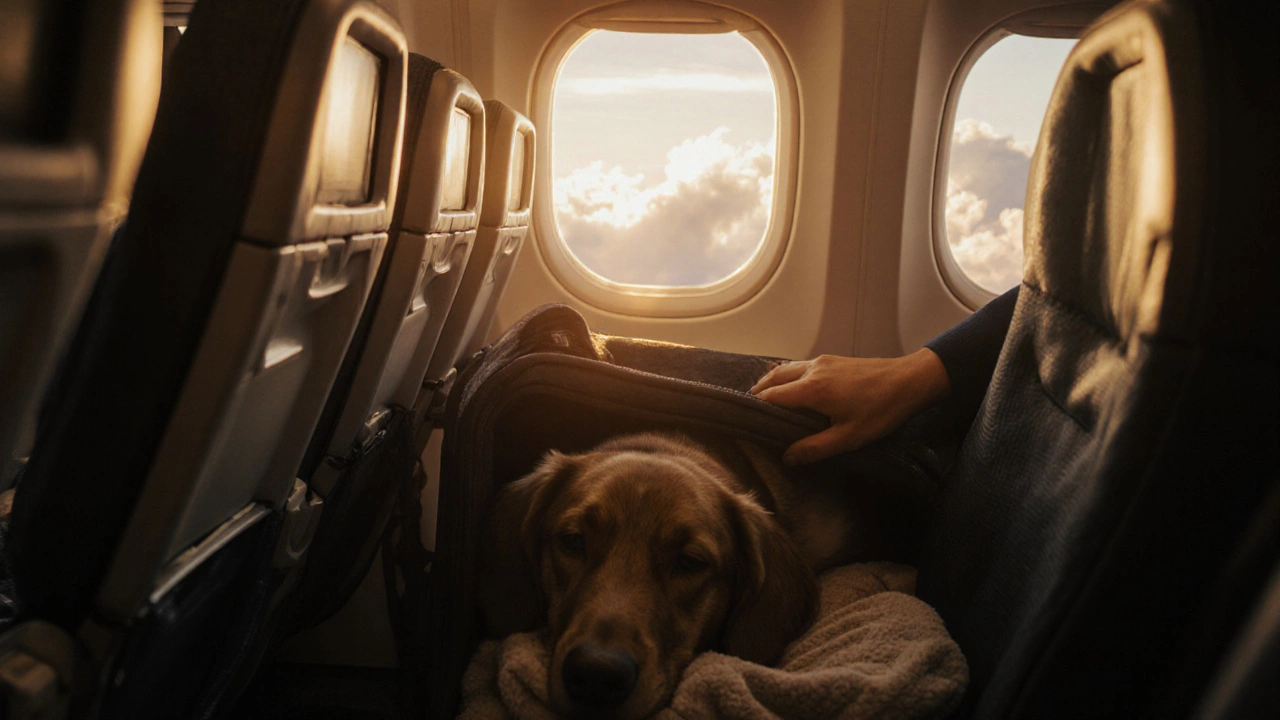
Practical Steps to Prep Your Dog for the Flight
- Schedule a wellness check with your vet at least two weeks before departure. Get clearance for any medication you plan to use.
- Read the airline’s pet policy. Note carrier dimensions, temperature restrictions, and medication documentation requirements.
- Acclimate your dog to the travel carrier. Place treats, a favorite blanket, and a chew toy inside for a week before the trip.
- Administer the chosen calming aid at the recommended time (usually 30‑60minutes before security).
- Pack a small kit: water bottle, collapsible bowl, a spare harness, and a copy of the vet’s note.
- At the airport, keep the carrier in a calm area. Speak softly and avoid sudden movements.
- During the flight, check on your dog if allowed. Offer a sip of water and reassure with a calm voice.
Safety Warnings & Common Pitfalls
Even the safest calming aids can backfire if misused. Keep these red flags in mind:
- Never exceed the recommended dose. Over‑sedation can lead to respiratory depression, especially in brachycephalic breeds.
- Do not combine multiple sedatives (e.g., Benadryl plus melatonin) without veterinary guidance.
- Avoid giving any new supplement within 48hours of the flight; you won’t have time to spot adverse reactions.
- Check that your carrier is well‑ventilated. A calm dog still needs fresh air.
- If your dog shows signs of severe anxiety (excessive drooling, trembling, vomiting), alert the flight crew immediately.
Frequently Asked Questions
Can I give my dog Benadryl without a prescription?
Yes, Benadryl is available over‑the‑counter, but you should still confirm the correct dosage with your vet, especially if your dog has heart or liver issues.
Is CBD oil legal for pets in the UK?
CBD derived from industrial hemp (less than 0.2% THC) is legal in the UK, but airlines may have their own restrictions, so always double‑check before you travel.
How long before the flight should I give a calming supplement?
Most products reach peak effect between 30 and 60 minutes after administration. Plan to give the dose right after you clear security, so the effect lines up with boarding.
Can I use a pet‑appeasing pheromone collar during the flight?
A pheromone collar works continuously and is safe for most dogs. It’s a good non‑oral option, especially if you’re worried about medication interactions.
What if my dog gets sick during the flight?
Notify the flight crew immediately. Most airlines have a protocol for medical emergencies involving pets and will arrange for assistance or a quick landing if needed.

